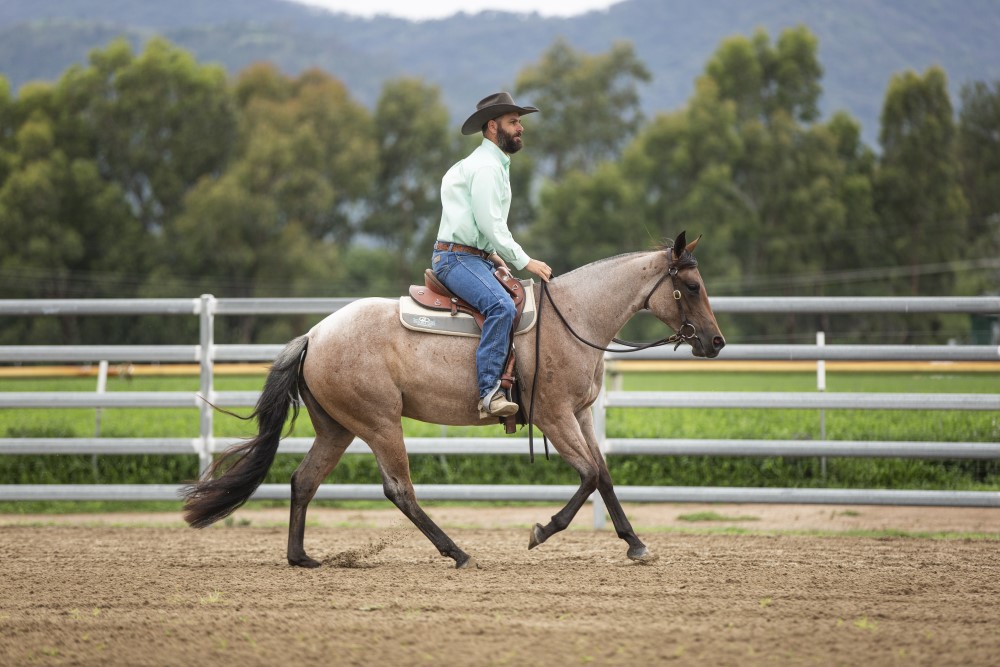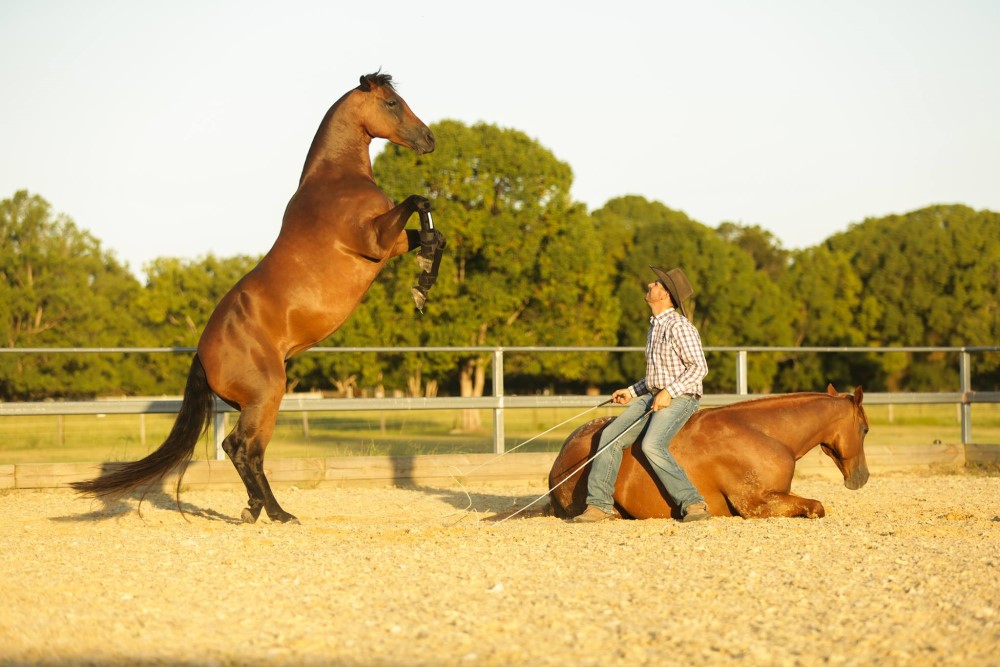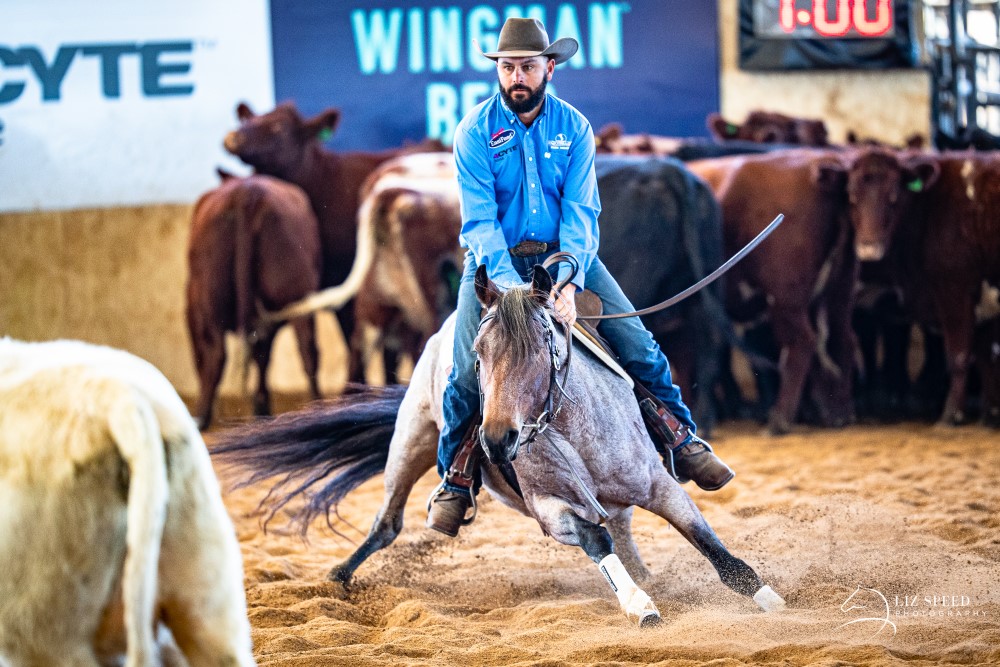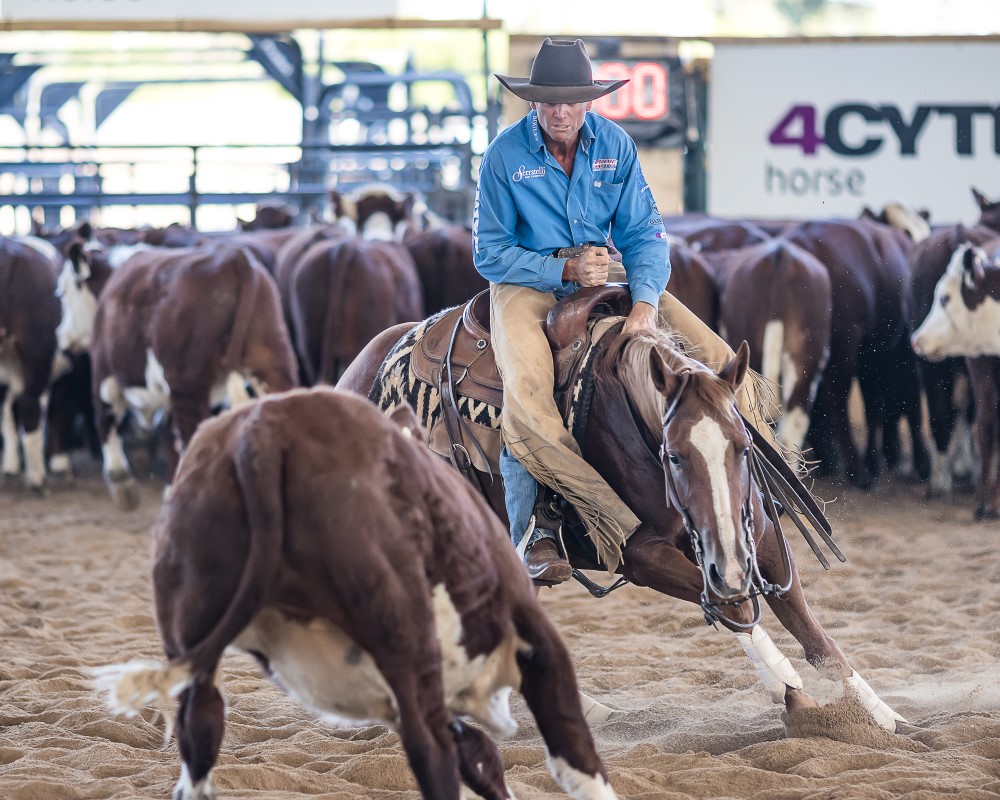The art of horsemanship can be summed up in one phrase: creating a willing partnership between horse and human.
I often use the phrase “horsemanship is simple, just not easy”. I know this to be true, as it takes most of us the best part of our lives to feel we have a grasp on the concept, and even longer to master it. In this instalment, I will give you my interpretation and definition of horsemanship, and how it is not discipline specific. I have observed both good and bad interpretations of horsemanship across all equestrian pursuits.

The movie The Horse Whisperer (you can read more about this film in the July 2022 issue of Equestrian Life) brought horsemanship into the limelight via the silver screen, in both the equestrian and “normal” world. It coined all the illustrious connotations associated with a “horse whisperer”, such as the magical and majestic horseman who could whisper to the wildest of steeds and quietly tame him. The world is still hung up on the phrase. Quite often, as Dan (James) and I are interviewed, we’ll inevitably face the question as to whether or not we ourselves are “horse whisperers”.
When this question gets asked I always think back to the time I heard one of Australia’s greatest horsemen, Ian Francis, getting asked the same question by an audience member after he did a demonstration at Equitana some years ago. For a brief moment he paused (probably for dramatic effect) and then delivered what I believe is the best response to the question I have ever heard: “No ma’am, I want them to hear me loud and clear!”
That answer has stuck with me, and as much as I would love to claim this brilliant response as my own, I never do. Instead I am guilty of leaning towards a little more romanticism, because I know that’s what they are looking for, thanks to Hollywood.
Horsemanship stands on four pillars: Communication, Program, Balance and Empathy, and with this in mind I am going to take you through my ideas and beliefs on The Art of Horsemanship.
COMMUNICATION

To me, communication is the first and foremost part of horsemanship; it is the key to any successful partnership and has to be a two-way street. We need to find balance in being able to listen to our horse’s needs and effectively communicate our own.
It is commonly accepted across the globe that horses learn via pressure and release. Clinicians and trainers might have different terms to explain this training principle, but it always boils down to the same concept. Horses learn from the release of pressure, not the application or the cause of the pressure. To break this down, it can be best understood by realising that a horse can learn any cue for any type of behaviour, based on when the release of pressure comes. If a horse rears up when being taught a cue for backing up, for example, and the pressure (cue) is released (often due to a fall from the rider or displacement of the handler), the horse will readily learn that this behaviour is the appropriate response to that particular cue. This is often misdiagnosed.
The release is paramount to the horse understanding what the desired response is. One of my mentors, Warren Backhouse, introduces his clinics with this statement: “Everything your horse knows right you’ve taught it, and everything you horse knows wrong, you’ve taught it.”
I love this because he puts the onus back on us, the humans, to make sure we are clearly communicating the correct responses to our horses. Willingness progresses to responsiveness.
Here’s a story. Wives make the best horse trainers in the world. And no, it’s not because they nag. There’s no longevity in nagging. You might get a short-term half-hearted response but that’s it. This is true for both horses and husbands, trust me.
Wives make the best horse trainers because wives have an uncanny way of training their husbands without them ever knowing. I figured this out from my own experiences. The trick is to make our idea their idea. Wives have discovered that if they go directly to the source, they usually get confrontation, and it’s the same with horses. The art to it is to show the horses the release and allow them to learn it, so they can then control it.
Our liberty horses have helped both Dan James and I hone our skills of communication, as our only way to communicate is through the release of pressure. Have you ever wondered why horses choose to work with us at liberty when the simpler option would be to run off and hide? The answer is this: they stay because they control the release of pressure when they are with us.

Warren Backhouse also helped me understand this better at one of his clinics I attended. It was a five-day reining clinic and I had been away just before it on my own clinic schedule. Warren’s clinic ran from Monday through to Friday. I had an entertainment show booked for the Saturday close to the clinic’s venue, so I brought my liberty horses along with me. After each day of tuition, I would bring my horses in and prepare them for their show on the weekend. Most of the clinic participants would hang around watching, including Warren himself. Sometime during all of this, Warren said something to me that opened up a Pandora’s Box, so to speak. It was like an epiphany. I can’t remember the exact words, but it has had a huge impact on me ever since. It was something along the lines of, “Dan, you need to ride your horses like you work your liberty horses.”
At the time it washed over me, and I am sure I would have had a blank look on my face while I was trying to figure out what he meant. Instead of answering with a vague “uh huh”, I should have pressed further for insight. I always preach to my clinic participants the importance of understanding why we do what we do so we can sell it to the horse, so if they don’t understand something be sure to ask me. I should have taken my own advice, but I never like questioning my mentors as I feel like it is disrespectful.
That simple statement sat with me, turning over in my head at every spare moment I had, until I figured out what he meant. When I rode I would maintain even a small amount of pressure on my aids to hold the horse in the manoeuvre. It was only when the horse had finished the manoeuvre that there would be a full release of pressure. The difference when I work with my liberty horses is that the release is constant in the manoeuvres. It’s our only communication as we don’t have any physical contact on them. It’s not like I was tough on my ridden horses, to me it was quite the opposite; I thought I was one of the softest riders I know.
PROGRAM
Once you have the concept of the principle, and you have opened up the lines of communication, you need to work within a program to teach the horse. In my partnership with my horse, I see myself as the teacher and the horse as the student, and the program is the curriculum. I am responsible for teaching effectively, and as such, if the horse is having trouble learning, it is my responsibility as a teacher to adjust my program.
As we know with children, they don’t all learn the same way. Some students prefer to learn in a classroom, reading about the subject before putting it into practice. On the other end of the spectrum there are students who can’t relate to learning out of a book, they are more hands-on. These particular students might struggle to grasp basic mathematics in a classroom, but take them into the woodworking room and before you know it they are adding, subtracting and working out angles, as to them this makes sense in a more practical way. Horses can be the same. Some learn better in a smaller, confined classroom (like an arena) and they like learning all the small facets to the program before putting it into practice. There are others that need to learn out on the trail and in more practical situations.

One example that comes to mind is working with cow horses. You can ride a horse in an arena, practising all the manoeuvres required to work a cow, and the horse feels as athletic as a stump of wood. But when you put that same horse in front of a cow, he becomes an athletic machine with big stops and fast turns, because now it makes sense to him — he needs to stop quick because the cow stopped.
“I will change the way I teach
the horse the curriculum to
help him understand…”
Another horse might become overwhelmed when he’s thrown into a pen with cattle, and this type of horse might fare better to practise his stops and turns without the cows and refine his manoeuvres first.
My point I am circling back to is this – I won’t change my curriculum because it’s important but I will change the way I teach the horse the curriculum to help him understand. If your program is structured in small increments and allows your horses to learn and develop within each step, like grading in a school, then you will be successful in teaching your horse.
BALANCE
I heard Warwick Schiller sum this up the best at one of his presentations. “Yin and yang,” he said. “If the horse has too much yin they need more yang, and if they have too much yang they need more yin.” This is a simple analogy to describe balance. Another great quote I shared on our Double Dan Horsemanship Facebook page that nearly broke the internet was Charlotte Dujardin’s post: “A hot horse needs to learn to go forward with leg on and a lazy horse needs to learn to go forward with leg off.”

Needless to say, our Facebook page blew up with contradicting responses from our followers. I sat back and read them and pondered how important it is to have the mental balance right with the horse. Here, both Charlotte and Warwick shared the same view in a different way. This is another example that horsemanship is not discipline specific with Charlotte being an Olympic dressage multiple gold medallist and Warwick hailing from a reining horse background and recognised as one of the world’s leading equine behaviourists. Both, in their own context, are talking about the same thing.
EMPATHY
Seeing it from the horse’s perspective is as important as all the other pillars. Empathy, by definition, is the ability to understand and share the feelings of another. I have two stories to share from another great Australian horseman and mentor of mine, Mark Buttsworth, who is extremely successful in cutting and campdrafting. The first story came about when I was speaking to Mark on the phone to finalise a trip that I was taking up to his place in the coming weeks. I had asked about a particular horse he was training for the upcoming National Cutting Horse Futurity and he had spoken quite highly of him, which, if you know Mark, is very unusual as he never likes talking himself up and is extremely modest — I knew the horse must be going extremely well.
“Seeing it from the horse’s
perspective is as important.”

I arrived at his place and I was eager to watch him work. On this day the horse had a shocker, and Buttsy had to really push the horse to get to a positive place. As we rode the horses back to the stables, Mark was a little embarrassed. He hoped the horse would have gone a lot better for me to see. As we rode he ran through all the things that might have affected the sudden change, like soreness in the feet or body or so on. I thought to myself, “How cool is this guy?” He didn’t let his ego get in the way like so many other horse trainers I had been around.
The second story from Mark was when he had a young guy working for him. Buttsy had a serious fall at a campdraft event and was unable to ride for a long time, so he relied on his young worker to ride all the horses that he had in work. Buttsy would go down to the arena to observe and mentor the young guy as he rode the horses. After one of these sessions Buttsy had asked the guy how he thought the session went on one particular horse, to which he replied “All right, I guess”.
Buttsy then asked him how he thought the horse was feeling about the session, to which the young guy confessed he wasn’t sure. His look implied that he wasn’t sure why we should care how the horse was feeling about it all. Mark explained how it is important to make the horse feel good about the training session. Buttsy said this was the turning point for that young horse trainer and he went onward and upward, and has gone on to be successful in his own right.
The moral of the story is that a lack of empathy for the horse will hold you back and could be the missing key to unlocking your ultimate success. I have tonnes of these stories both from my own experiences and those of my mentors, where seeing it from the horse’s perspective has been the difference between success and failure when it comes to the horse’s development.
CONCLUSION

Horsemanship is something that I am extremely passionate about, and I strive to improve every day, even in the smallest ways. I do hope you feel the same way and find this article in some way helpful. That’s when I know I have done my job in inspiring people to improve their horsemanship skills. The Art of Horsemanship won’t come to you overnight. It’s taken Dan and I a lifetime of learning and mistakes and breakthroughs just to get this far. Mastery is a journey that you will embark on with each horse.
I will leave you with one last quote from Mark Buttsworth: “If you learn one new thing a day, then you have had a good day!” And that is a great way to look at life.
Dan Steers is one of five expert presenters appearing at Mastery of the Horse (14 -16 June 2024). You can find out more about the event here.
This article first appeared in Equestrian Life’s November/December 2017 issue.
YOU MIGHT ALSO LIKE TO READ:
One Hell of a Ride in Heavenly Patagonia (Dan James and Warwick Schiller tackle the Gaucho Derby) – Equestrian Life, April 2024
Getting Out & About with Dan Steers – Equestrian Life, November 2021

